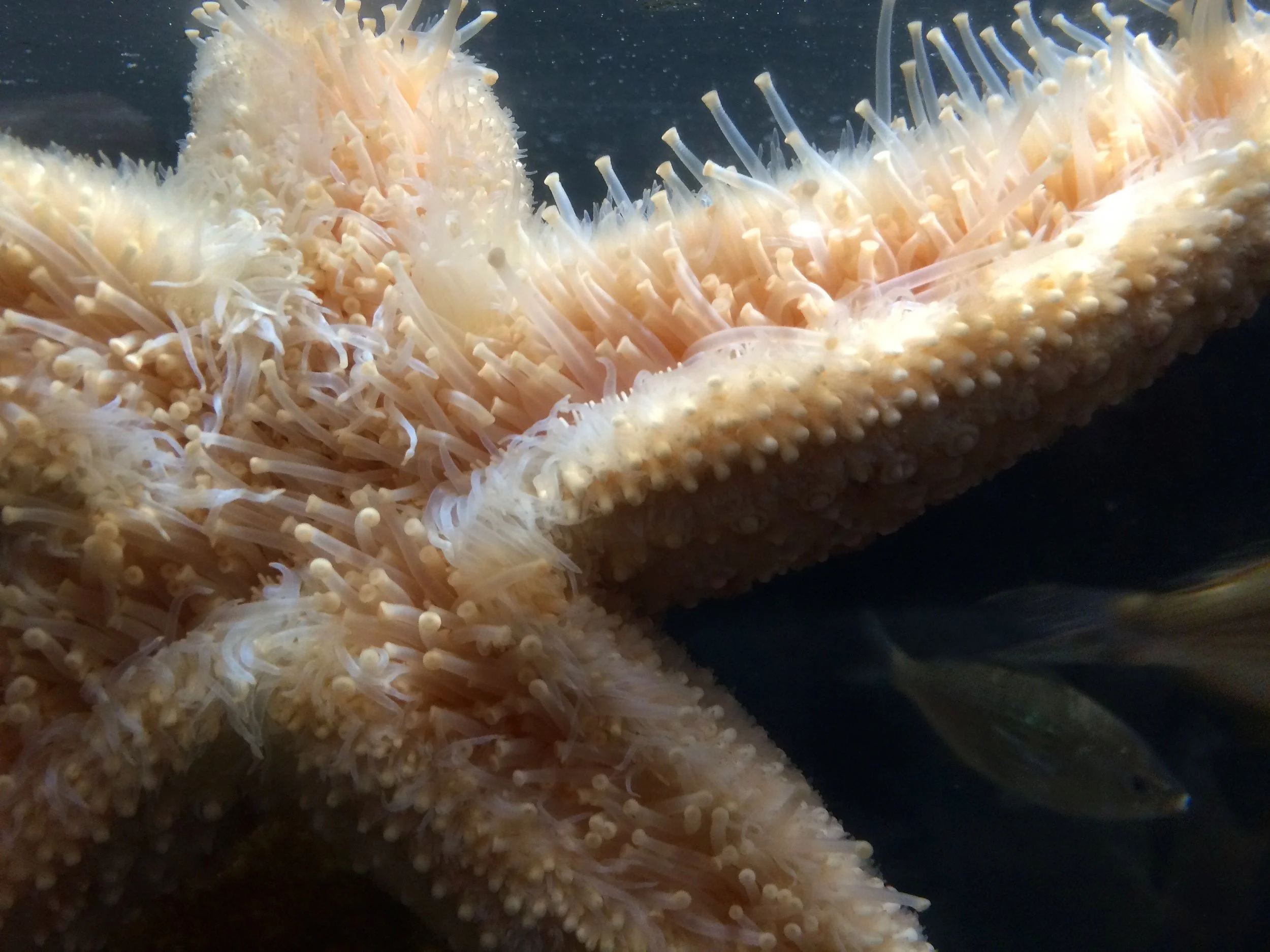California Academy of Sciences
Every docent is trained to work in the touch Tidepool, teaching guests about the native starfish and sea urchins found in our very own northern California tidal zones.
When I moved to San Francisco in 2014, I knew there had to be volunteer opportunities similar to my experience in college at the Pittsburgh Zoo – I just had to find them. I had been to the California Academy of Sciences before and fell in love with its diversity of subject matters, its world-class commitment to research, and its approachable, modern tone. After doing a bit of research, I soon applied to become one of the Academy's iconic volunteer docents in early 2015.
The process for becoming a docent was much more rigorous than that of other volunteer positions. Applicants had to undergo two rounds of interviews, several weeks of classroom training, study exhibit manuals, and pass the docent quizzes. After that, new docents had to volunteer for a minimum of 3 shifts a month for a year. I also eagerly attended the trainings for new exhibits and information that would pop up regularly throughout the year. Soon, I became a Daily Team Co-Leader for one of my shifts, helping staff to organize our team of docents and keep things on track throughout the day.
Despite the daunting list of requirements, being a docent was one of the most rewarding ventures of my life, having dedicated my weekends and weeknights to something I love. I've been able to connect with residents all around the Bay area, blow guests' minds with information about the amazing natural world, work with a community of incredibly dedicated and passionate individuals, and gain access to world-renown researchers. But perhaps most importantly, I felt like a valued, contributing member of the Academy and that I was truly helping to advance the shared mission to explore, explain, and sustain life in this world.
A crowd favorite, the comet demo allowed us to show guests the composition of comet nuclei while having fun with dry ice. (Safely, of course!)
The Academy's Living Roof is one of many sustainable practices they employ. Whale bones from found beached whales are cleaned by the microorganisms on the roof. As a docent, it's a great place to engage visitors about key conservation messages such as the importance of native plants, the plight of bees and other pollinators, and the delight of sustainable design.
With the Ichthyology cart, I taught visitors about the incredible diversity of fish by encouraging them to actually touch real, preserved specimen from the collection.
An ochre starfish, native to the northern Californian coast, uses its many tube feet to stick to the glass in the touch Tidepool exhibit. Engaging with guests from all over the world, it was always exciting to share my passion for the natural world. Many guests didn’t have access to nature or science resources, with some even incredulous that they were touching real, living animals.




